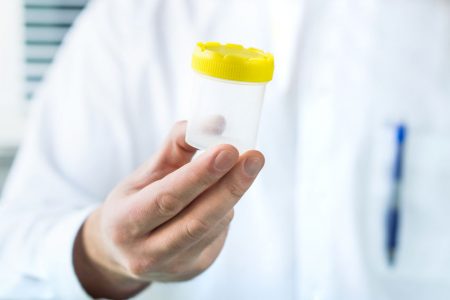The High Court of Australia will begin hearing a case on Tuesday 16 April 2019 regarding whether or not a sperm donor can legally be regarded as a parent.
The Newcastle NSW based sperm donor, known as *Robert, is challenging a decision by the Full Court of the Family Court that he is not the father of the girl conceived from genetic material provided by him.
There are two relevant children. Robert provided the genetic material for the eldest child’s conception. An anonymous sperm donor was used for the second child, following Robert’s refusal. *Susan is the biological mother of both children. *Margaret is Susan’s spouse. Robert is noted as the biological father of the elder child on her birth certificate. Margaret is noted as the intended other parent on the younger child’s birth certificate and now appears on an amended birth certificate as a parent. Robert is in a relationship with Greg. Robert and Greg have been an active part of the children’s childhood, with both girls calling Robert ‘Daddy’.
The initial proceedings
One of the issues in dispute when the case first came before the Family Court of Australia at Newcastle was that Susan, being born in New Zealand, wanted to move there with Margaret and the two girls. Robert opposed the move. The other main issue was who is the legal parent of the eldest child – Robert or Margaret.
Justice Cleary confirmed that for Margaret to be regarded as a parent of the child she must have been in a de facto relationship with Susan at the time, have consented to the procedure of artificial insemination and Robert consented to the use of his genetic material in the process. Justice Cleary was not satisfied that Margaret and Susan were in a de facto relationship at that time and therefore she could not be regarded as the intended parent.
For Robert to be regarded as a parent it had to be found that he provided his genetic material for the purpose of fathering a child and was unaware of a de facto relationship between Susan and Margaret at the time of conception. Justice Cleary found that biology is just a factor of consideration and it was equally as significant that there had to be some belief by Robert that he was fathering a child who he would help parent. Robert was present for the scans, was present at the birth, commenced paying child support privately and spending regular time with the child. Justice Cleary found that Robert was the legal parent of the eldest child.
In 2017, Cleary J made final orders in relation to parenting arrangements for the children. Equal shared parental responsibility was given to Susan and Margaret, with Robert to be notified of their decision and given an opportunity to respond – which they were to consider. Orders were made for Robert to spend regular time with both girls. The Orders further provided that Susan and Margaret could not relocate to New Zealand without Robert’s written consent.
Appeal
Susan and Margaret appealed the decision to the Full Court of the Family Court of Australia. On appeal, amongst other grounds, it was argued and accepted by the Court that the state law contains a non-rebuttable presumption that if the child is born to a woman by fertilisation procedure and is not married or in a de facto relationship with the man, then the man is not the father of the child. Because of this, it was an error for Justice Cleary to apply federal law where the non-rebuttable presumption existed in state law. Therefore, Robert could not be legally regarded as the father of the eldest child. The Full Court remitted the matter back to the Family Court to be determined by re-hearing.
Further hearing before the Family Court
Susan and Margaret filed an Application in a Case which was heard before the Family Court in September 2018. They were seeking to discharge the final orders and seeking interim orders which substantially reduced Robert’s time with the children. The Court dismissed the Application in a Case.
High Court
Robert appealed the decision of the Full Court to the High Court of Australia, seeking that he be recognised as the legal parent of the eldest child. This will be the subject of hearing from Tuesday.
The High Court’s decision on this aspect will provide more certainty to sperm donors who are fulfilling a parental role in a child’s life. If Robert’s argument is accepted by the High Court, women who have children born by sperm donors may face challenges in the future for the donor to have a greater role in the child’s life. Federal Attorney-General Christian Porter has thrown support towards the case and argues for the expansion of the term parent to include sperm donors in certain circumstances.
*Pseudonyms were given to all parties




